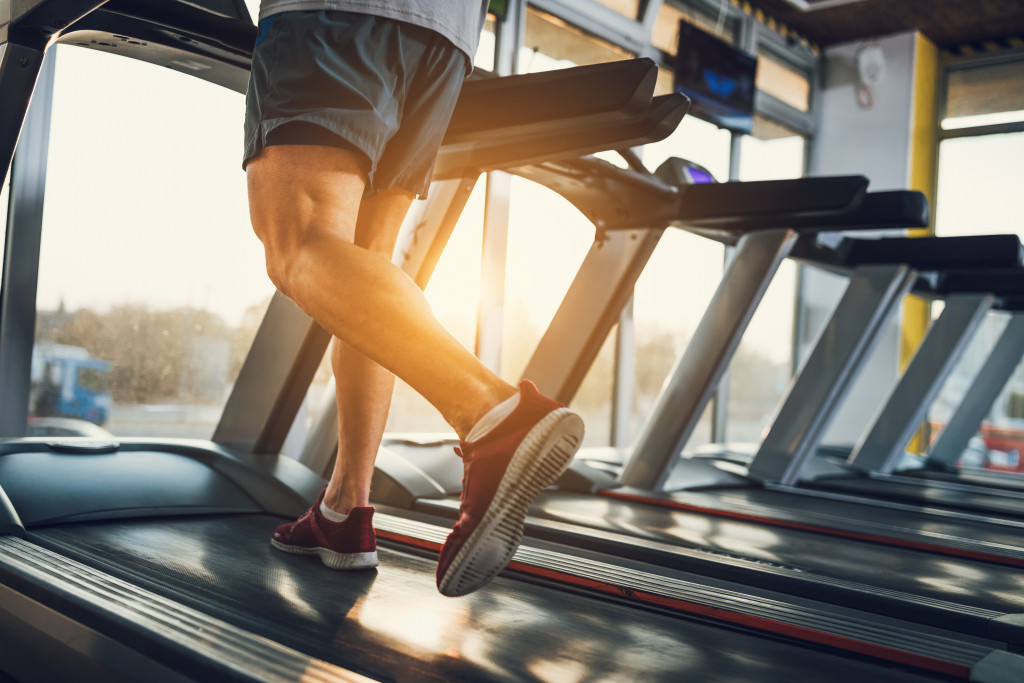When you look up “body image” or “body positivity” on the Internet, most contents you’ll find are targeted to women. You’ll discover many events and campaigns started by different companies and organizations to support plus-sized and normal-bodied females. They’re indeed phenomenal and remarkable, as the awareness and change they’re spreading are causing thousands to millions of women and girls around the world to be more appreciative of their bodies.
However, while these movements are making the world a better place for “normal” females, it also raises the question: Is there a body positivity movement for men?
Stars Robert Pattinson and Sam Smith are among the few men who have bravely spoken up about their struggles with their body images. They have proven that even men like them, famous and successful, aren’t invulnerable to society’s pressure that men’s bodies must be chiseled and lean. Hence, how much more are ordinary males struggling, especially teens?
If boys and men continue to receive less attention from body positivity movements, more of them could develop eating disorders or body dysmorphia. According to the National Eating Disorders Association, 33% of males used unhealthy behaviors to control their weight. These include excessive exercise and diet changes, both of which could grow more intense with time.
The Origin of Men’s Body Image Issues: The Superhero Effect
The silver screen is one major contributing factor to the growing negative body perception for boys and men, as agreed by most scientists, celebrities, and average males. In particular, the superhero movies triggered this issue, having increased males’ interest in building up their muscles. According to research by psychiatrists at UCLA, 90% of middle and high school boys exercise with the intent of “bulking up.”
Gym Selfies: A Developing Cause of Body Image Issues
43% of people take photos and videos at the gym. While they may have good intentions, their photos and videos sadly cause pressure to other males trying to get fit. Some find it motivational, but guys who are just beginners in the gym are intimidated.
Hence, if you or someone you know starts to exhibit behaviors such as the following, consider looking up treatment programs for anorexia nervosa because the National Eating Disorders Collaboration regards them as warning signs of the eating disorder:
- Preoccupation with weightlifting or bodybuilding
- Stress when missing a workout
- Working out even when injured
- Weakness
- Decreased interest in sex

What’s a Healthy Exercise Regimen for Teens?
It’s only natural for teen boys to start expressing interest in exercising. As long as they don’t develop an obsession with it, specifically one motivated by pressures to be perfect, we should encourage them to get fit.
Many boys would first engage in sports or aerobic activity before strength training. They might join their school’s athletic program, where they would be introduced to strength training.
Contrary to popular belief, strength training will not stunt growth. In fact, it is the key to motor skill development and athleticism. However, kids and adolescents shouldn’t be lifting heavy weights at such a young age. Instead, they should familiarize themselves with the different types of resistance exercises, such as push-ups, planking, squats, sit-ups, free weights, bands and tubes, and weight machines.
If they haven’t reached puberty yet, strength training will help them get stronger, but their muscles won’t grow bigger yet. Their muscles will start responding to their workouts only after puberty when they’re already releasing testosterone.
Before letting your teen go to the gym or do strength training at home, it’s wise to seek their doctor’s approval first. When you get the thumbs-up, seek guidance from a fitness expert, ensuring that they are a certified strength-training expert with sufficient experience in working with teens.
These are the basic rules a certified expert will likely present:
- 5- to 10-minute warm-up before every session.
- Start with bodyweight exercises (sit-ups, push-ups, squats), and work on technique without weights.
- Use resistance equipment around three times a week. No weight-training on back-to-back days.
- Two to three sets of higher repetitions. No maximum lifts.
- Improve technique with supervision.
- 5- to 10-minutes cool down and stretch after every session.
To achieve the best results, teens should do strength training two to three days a week, for at least 20 to 30 minutes. But doctors still recommend at least an hour of moderate to vigorous physical activity every day. Hence, during their rest days, ensure that your teen still gets aerobic activity, like walking, cycling, or running. Make sure that they’re getting enough water and healthy food every day as well.
Be careful in making comments about their weight and bodies, too. Focus on the positive, giving them praise for every progress, and reassuring them that they look good enough, even without bodies like superheroes and runway models.

